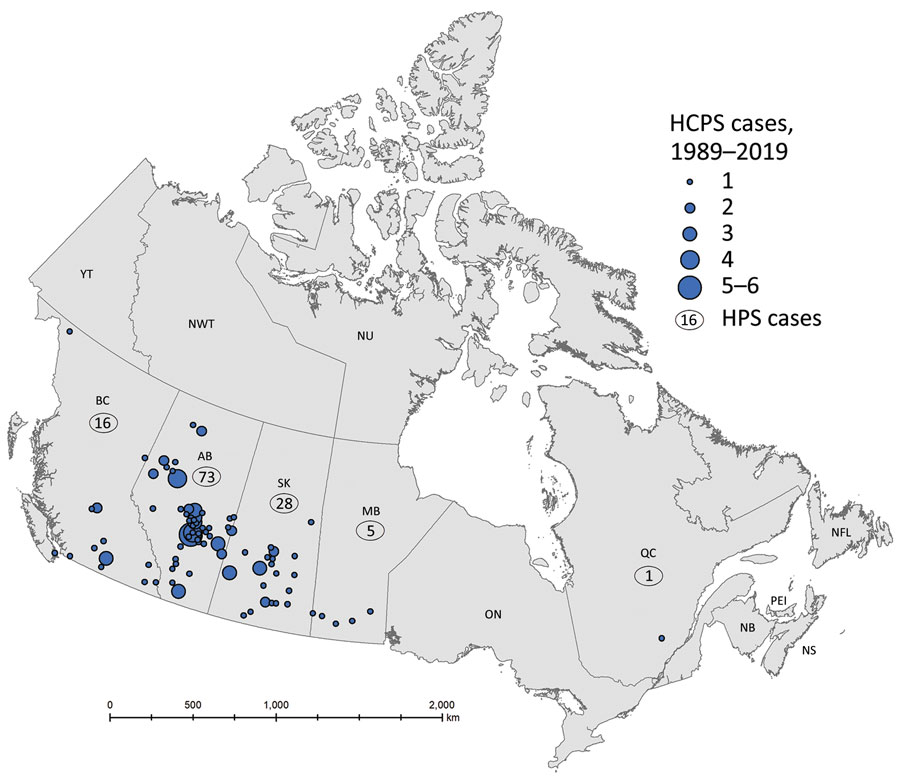Volume 26, Number 12—December 2020
Dispatch
Hantavirus Cardiopulmonary Syndrome in Canada
Figure 1

Figure 1. Geographic distribution of confirmed cases of hantavirus cardiopulmonary syndrome (HCPS) in Canada, 1989–2019. The map shows the locations of cases in Canada based on provinces where Sin Nombre virus infection was likely contracted; data were provided on diagnostic requisitions, physician reports, or follow-up investigations. Numbers in circles indicate number of cases for that province. The locations of 15 cases could not be mapped due to insufficient information.
1Current affiliation: McMaster University, Hamilton, Ontario, Canada.
2Retired.
3Current affiliation: Université Laval, Quebec City, Quebec, Canada.
4Current affiliation: National Institutes of Health, Hamilton, Montana, USA.
Page created: October 08, 2020
Page updated: November 19, 2020
Page reviewed: November 19, 2020
The conclusions, findings, and opinions expressed by authors contributing to this journal do not necessarily reflect the official position of the U.S. Department of Health and Human Services, the Public Health Service, the Centers for Disease Control and Prevention, or the authors' affiliated institutions. Use of trade names is for identification only and does not imply endorsement by any of the groups named above.